In the labyrinth of academic and professional research, a well-crafted proposal serves as the map that guides you through. The journey of research can be filled with unforeseen complexities and challenges.
To ease this process and inject efficiency into your endeavor, the Research Proposal Template Word emerges as a powerful tool. This versatile template is designed to accommodate a variety of research themes and methodologies, providing an organized framework for researchers to elaborate on their ideas, objectives, and procedures.
It assists in clearly defining the research problem, outlining the research methods, and setting forth the expected outcomes in an understandable format.
What is a research proposal?
A research proposal is a comprehensive outline of a proposed research project, usually presented to a committee or funding body to gain approval or funding. It describes the research plan, methodology, timeline, and other significant research factors.
The Importance of Research Proposal
Research proposals are essential tools in academia and various industries, helping to outline the course of new studies or projects. Understanding their importance shows their critical role in research planning and execution.
Clarification of Intent
A research proposal outlines what researchers intend to study, why that research is important, and how they plan to conduct the investigation. This blueprint provides a clear understanding of the study’s purpose and expected outcomes, which is valuable for the researchers and any stakeholders involved.
Evaluation Tool
Research proposals allow for evaluating the research before it commences. Supervisors, funding bodies, or ethical review boards assess the proposal to ensure the research is necessary, ethical, and feasible. This evaluation can save time and resources by preventing poorly planned research from getting underway.
Funding Acquisition
A well-crafted proposal can be crucial for researchers seeking funding. The proposal presents the research in a structured manner, showcasing its potential significance and demonstrating the researchers’ planning and research skills. It increases the chance of securing funding by convincing funders of the project’s value.
Facilitates Collaboration
Research proposals can foster partnerships and collaborations. They offer a detailed overview of the planned research, which potential partners can review to determine if their interests align with the project. This way, proposals can help build multidisciplinary teams, combining diverse skills and knowledge to enhance the research.
Project Management Tool
Once the research begins, the proposal’s detailed plan is a project management tool. It offers a roadmap for the research process, outlining steps and responsibilities and helping keep the project on track. It can particularly benefit large, complex projects involving several researchers or institutions.
A research proposal is a pivotal step in the research process. It helps clarify the plan of action and assists in securing funding, promoting collaborations, and ensuring efficient project management. Consequently, investing time and effort in crafting a robust research proposal is essential for successful research outcomes.
Tips to Optimize Your Research Proposal
Writing a compelling research proposal can be an intricate task. However, there are strategies that you can use to ensure that your proposal stands out from the rest and effectively communicates your research intentions. Here are some tips to optimize your research proposal:
- Understand Your Audience: Understand who will read your proposal before writing. Whether it’s a funding body, department head, or supervisor, each audience will have different expectations and areas of interest. Tailoring your proposal to your audience will ensure your message is clear and compelling.
- Be Clear and Concise: Avoid jargon and overly complex language. Your proposal should be accessible and easy to understand. Remember, the goal is to effectively communicate your research idea rather than showcase your extensive vocabulary.
- Keep Your Objectives Realistic: While it’s important to be ambitious, ensure your research objectives are achievable within the available time and resources. Unrealistic goals can be a red flag for evaluators.
- Structure Your Proposal Well: Follow a clear structure for your proposal. Headings and subheadings can greatly improve readability and make it easier for your reader to understand your proposal. Using a template can provide you with a solid framework.
- Detail Your Methodology: This is where you get to showcase your research skills. Detail the methods you will use, explain why they are suitable, and demonstrate your understanding of the research process.
- Provide a Detailed Timeline: Outlining a timeline with specific milestones will illustrate your project management skills and show your reader that you’ve thoroughly thought through your research process.
- Discuss Potential Impacts: Be sure to discuss the potential impacts of your research. Whether they are academic, social, or economic impacts, highlighting these can strengthen your proposal and demonstrate the value of your research.
- Proofread Your Proposal: Lastly, ensure your proposal is free from typos or grammatical errors. These mistakes can distract your reader and detract from the quality of your proposal.
Consider asking a colleague or mentor to review your proposal before you submit it.
The Benefits of Using a Research Proposal Template
Using a research proposal template in Microsoft Word comes with numerous advantages that can help streamline the process of drafting your proposal:
- Consistency and Standardization: Templates provide a consistent format for your proposal, ensuring that all necessary sections are included. They also adhere to standard academic proposal or industry structures, which adds credibility to your work.
- Time and Effort Saving: Instead of starting from scratch, you begin with a preformatted structure. It means less time worrying about layout and formatting, allowing you to focus more on the content of your proposal.
- Easy to Edit and Customize: Word templates are easily editable. You can customize them to fit the specific requirements of your research proposal. It includes changing font sizes, styles, and colors and adding, moving, or deleting sections as necessary.
- Built-In Citation and Bibliography Tools: Word has built-in tools to manage citations and bibliographies, critical aspects of a research proposal. These tools can automate citation and bibliography creation in various styles, such as APA, MLA, and Chicago, saving you time and ensuring accuracy.
- Collaboration and Sharing Features: With Word’s collaboration features, you can share your proposal with supervisors or colleagues for feedback and edits. Real-time editing and commenting facilitate effective collaboration.
- Accessibility and Compatibility: Microsoft Word is a widely used software, making your proposal template accessible to many and ensuring compatibility when shared.
- Revision History: Word allows tracking changes and referring to previous versions of the document, making it easier to review edits or revert changes if needed.
The research proposal template in Word provides a comprehensive, versatile, and user-friendly platform for creating a professional and persuasive research proposal. It allows you to concentrate on the essential aspect – your research idea – while it takes care of the formatting and structure.
The Disadvantages of Using a Research Proposal Template
While research proposal templates in Word offer numerous benefits, it’s important to note some potential drawbacks as well:
- Limited Creativity: Predefined templates might restrict creativity and originality. If you prefer a unique layout or innovative design for your proposal, a template might not provide the flexibility you need.
- Generic Structure: Although the standardized format ensures that you include all crucial parts, it might only be ideal for some research projects. Some proposals require specific sections not included in the template.
- Potential for Overreliance: There’s a risk of becoming overly reliant on templates, which could impact your ability to create a document from scratch. Understanding the structure and format is crucial, not just filling in the blanks.
- Compatibility Issues: While Word is widely accessible, not everyone uses or prefers it. Some may use other word processors, potentially causing formatting issues when sharing the proposal.
- Lack of Advanced Features: Word might need advanced features in dedicated project management or writing software for more complex proposals.
- Learning Curve: Although Word is relatively user-friendly, some people may still find navigating difficult, especially for more advanced formatting or editing tasks.
- Template Quality: The effectiveness of a template often depends on its quality. Some templates may need to be better designed or include critical components of a research proposal.
Despite these potential issues, a well-constructed Word template can be an incredibly useful tool when crafting a research proposal. Understanding its limitations helps to ensure you use it effectively.
Understanding the Key Elements of a Research Proposal
A research proposal rests on a series of foundational elements. Each plays a crucial role in ensuring the structure’s stability and efficacy.
Title
The title is the beacon that attracts and guides your reader. It should encapsulate the essence of your research while remaining concise and compelling.
Abstract
A well-crafted abstract is a miniaturized version of your proposal, offering readers a panoramic view of your research landscape.
Introduction/Background
Here, you lay out the terrain of your research. It sets the stage, provides context, and outlines the rationale for your investigation.
Literature Review
It is where you acknowledge the explorers who’ve tread the paths before you. You establish a rich background against which your research will shine by referencing relevant studies and theories.
Research Questions/Objectives
Your research questions are the destinations you aim to reach. They must be clear, focused, and relevant, offering valuable contributions to your field.
Methodology
The methodology is your travel plan. It details the steps you’ll take, the tools you’ll use, and how you’ll interpret the findings.
Potential Implications
It is where you gaze into the future, hypothesizing the potential impact and benefits of your research on your field and beyond.
Timeline
The timeline offers a realistic schedule for your research expedition, allowing you and others to track progress.
References
References are the footprints of the scholars who’ve journeyed before you, offering credibility and context to your proposed journey.
How to Create an effective research proposal
Here is a step to creating an effective research proposal:
- Selecting Your Research Subject: Initiate the process by determining an apt research subject. This subject should align with your study domain, ignite your intellectual interest, and offer a platform for original exploration.
- Developing Your Research Question: With the topic defined, devise your research question. This question should serve as the lighthouse guiding your study journey.
- Undertaking a Preliminary Literature Review: Delve into the current knowledge pool on your selected topic. You can shape your research course and strategies by determining learning gaps, understanding varying viewpoints, and learning about previously employed methodologies.
- Setting Your Research Objectives: After establishing the background and explaining the study question, articulate your objectives. These should mirror the outcomes you aspire to achieve upon the culmination of your research.
- Framing Your Methodology: Describe the method you plan to use. It should encapsulate your research plan, data compilation techniques, data research strategies, and any tools you plan to utilize.
- Gauging Potential Implications: Weigh your research’s possible ramifications and influence. Assess how your discoveries could enrich your field, effect policy changes, or address real-world issues.
- Scheduling Your Timeline: Establish a feasible timeline for your research, considering all stages – from data gathering and analysis to drafting the final report or thesis.
- Outlining Your Budget: Should your research incur costs, formulate a comprehensive budget detailing all expenditures for data collection, equipment, travel, and other necessary resources.
- Considering Ethical Aspects: Address any ethical concerns pertinent to your analysis, including data privacy, informed consent, possible risks to parties, and measures to mitigate these risks.
- Drafting Your Research Proposal: Use the Research Proposal Template Word to compile your proposal. Ensure all the elements discussed earlier are included – Title, Abstract, Introduction, Literature Review, Research Questions, Methodology, Potential Implications, Timeline, and References.
- Editing and Proofreading: The final step involves meticulous proofreading for grammatical inaccuracies, inconsistent formatting, or ambiguous statements. Edit as required, ensuring your proposal is lucid, integrated, and persuasive.
Developing a research proposal can be strenuous, but embarking on this intellectual voyage with a clear plan and structured approach can be deeply rewarding.
Who Should Use a Research Proposal?
A research proposal serves a pivotal role in various academic and professional fields. Its usage is not limited to one discipline but transcends multiple sectors. Here’s a list of those who commonly require research proposals:
- Academic Researchers: Researchers use proposals to outline their intended studies in academia. Whether for a thesis, dissertation, or specific research project, a research proposal aids in setting the direction for the research.
- Graduate Students: Graduate students, especially those pursuing Masters’s or Doctoral degrees, often use research proposals to define the scope of their thesis or dissertation work.
- Grant Applicants: Individuals or groups seeking funding for research from government bodies, non-profit organizations, or private institutions must submit a research proposal. The proposal details the research objectives, methodology, and potential impacts, helping funders decide to grant the funding.
- Corporate Researchers: In the corporate world, research proposals are used to plan market research, product research, or competitive analysis. These proposals help get buy-in from senior management or other stakeholders and secure necessary resources for the research.
- Non-Profit Organizations: Non-profit organizations often use research proposals to explore societal problems, test interventions, and assess the impacts of their programs. These proposals can be used to secure funding or partnerships.
- Government Agencies: Public sector agencies may write research proposals to study public policy issues, assess program effectiveness, or explore social phenomena. These proposals help justify the allocation of public funds for research.
- Independent Researchers: Individuals conducting research independently or as part of a small team also benefit from research proposals. The proposal helps them organize their study and can be used to solicit funding, support, or partnerships.
By laying out the expected path of the research and its anticipated outcomes, a research proposal is an invaluable tool for anyone conducting substantive and systematic investigations. It promotes clarity, organization, and focus, making it a staple in any research-oriented undertaking.
The Research Proposal Template Word
The Research Proposal Template Word is a customizable, intuitive, and comprehensive tool. It integrates all essential components of a research proposal, offering a sturdy structure that can be tailored to fit individual research needs.
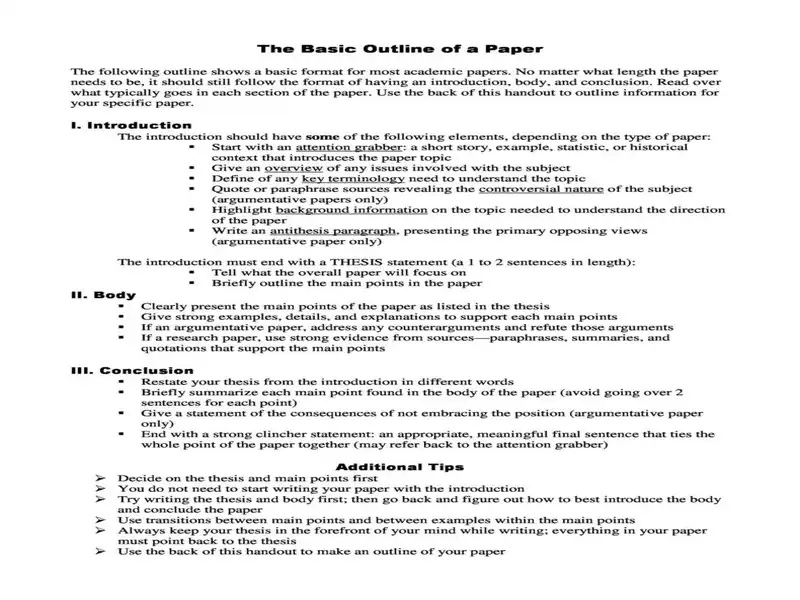
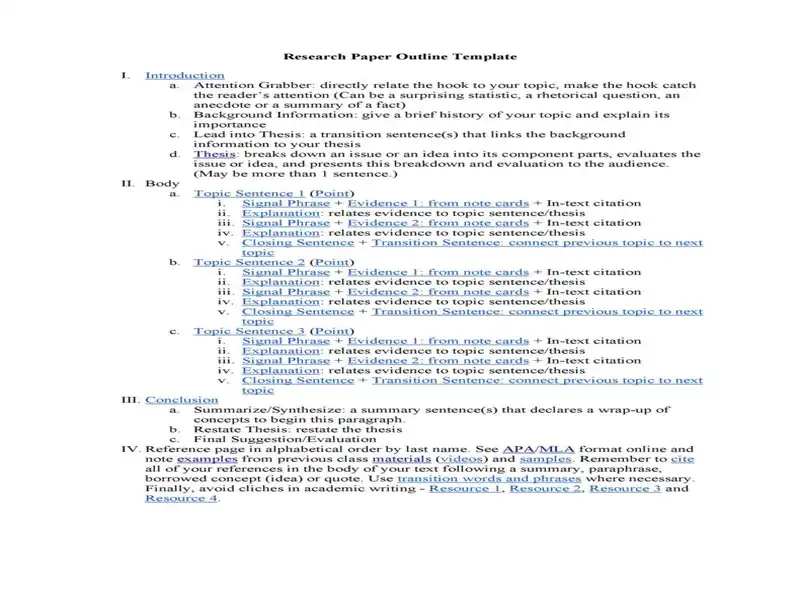
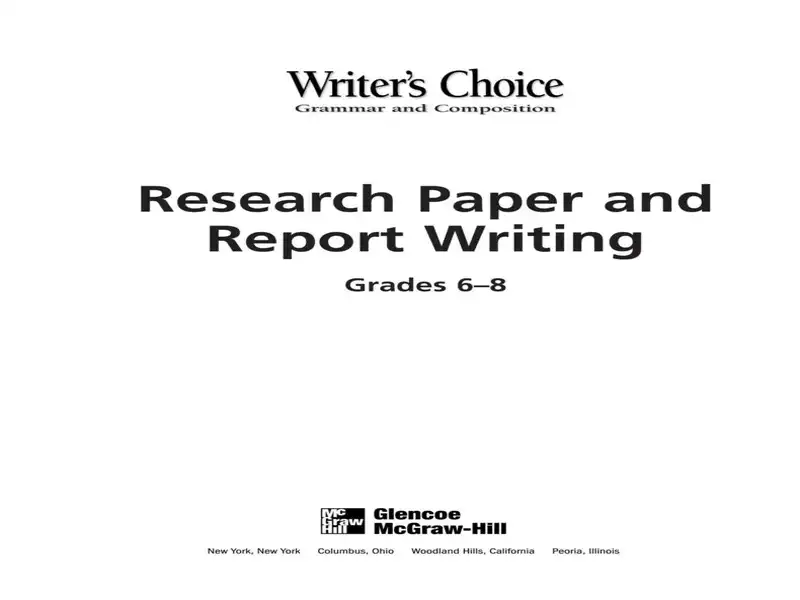
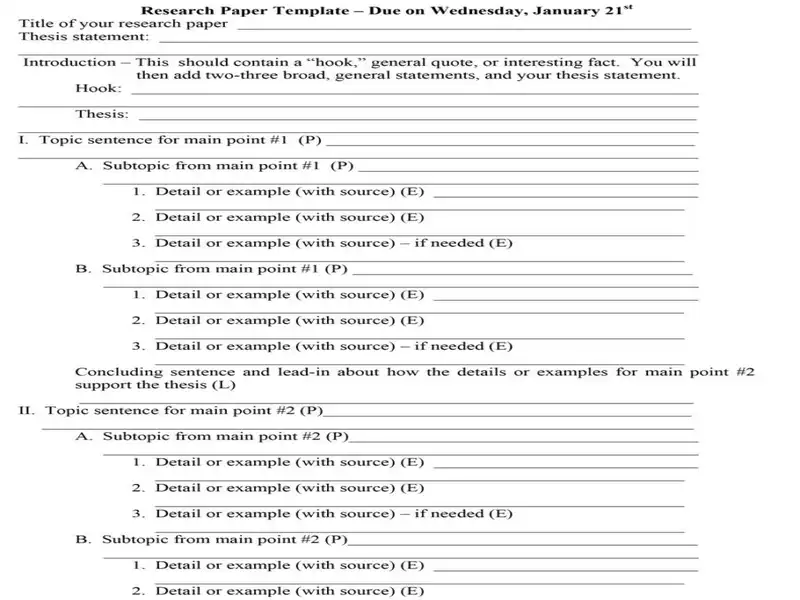
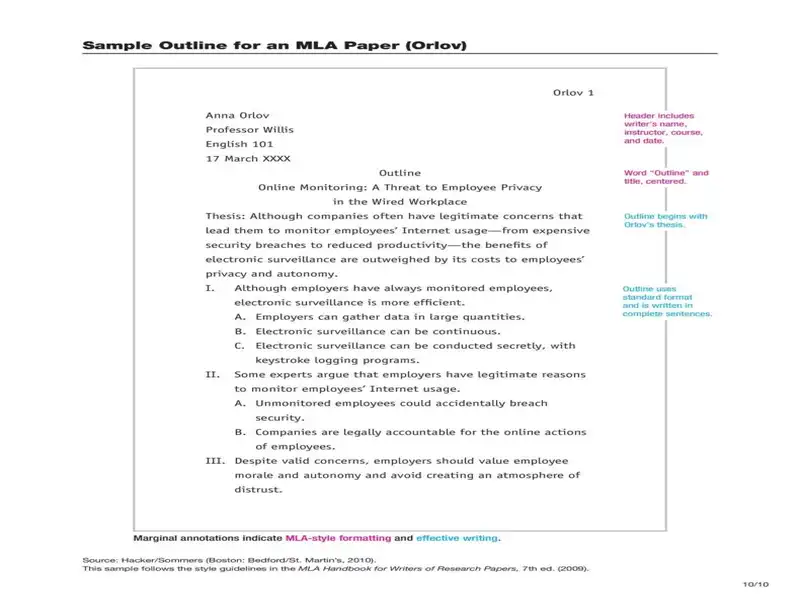
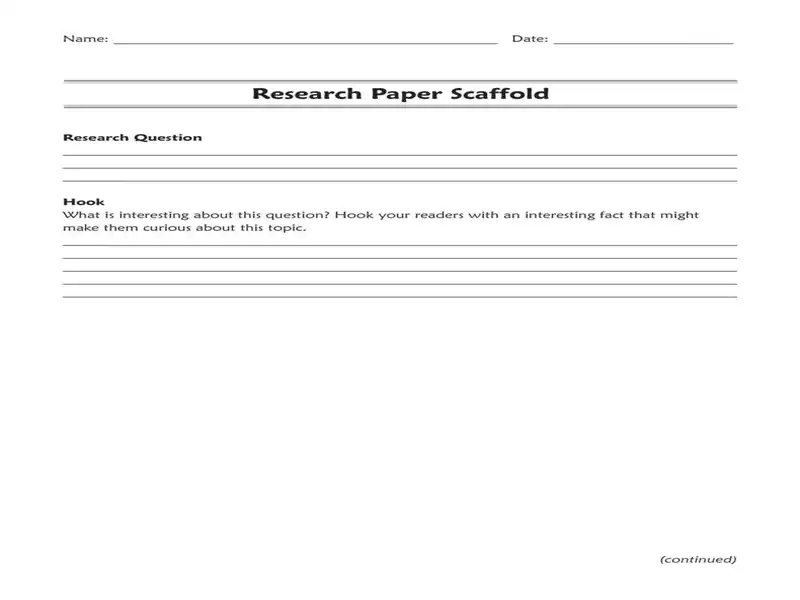
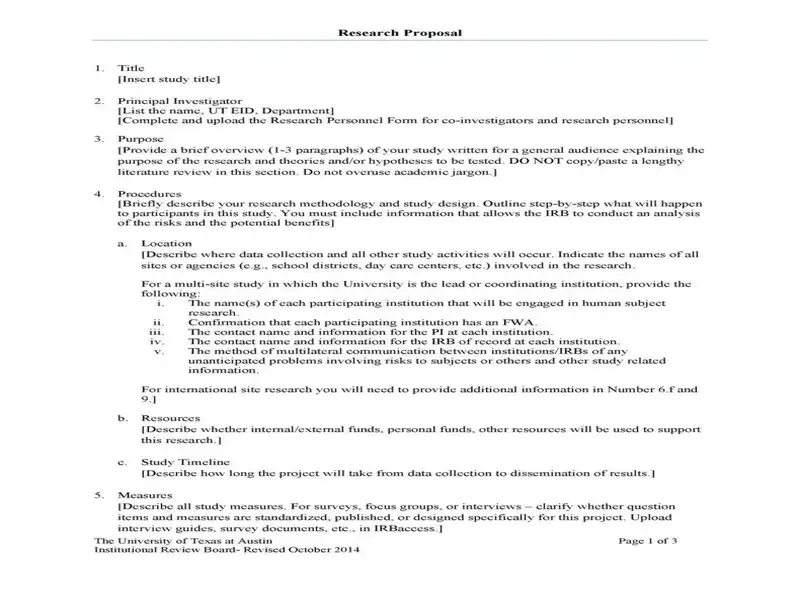
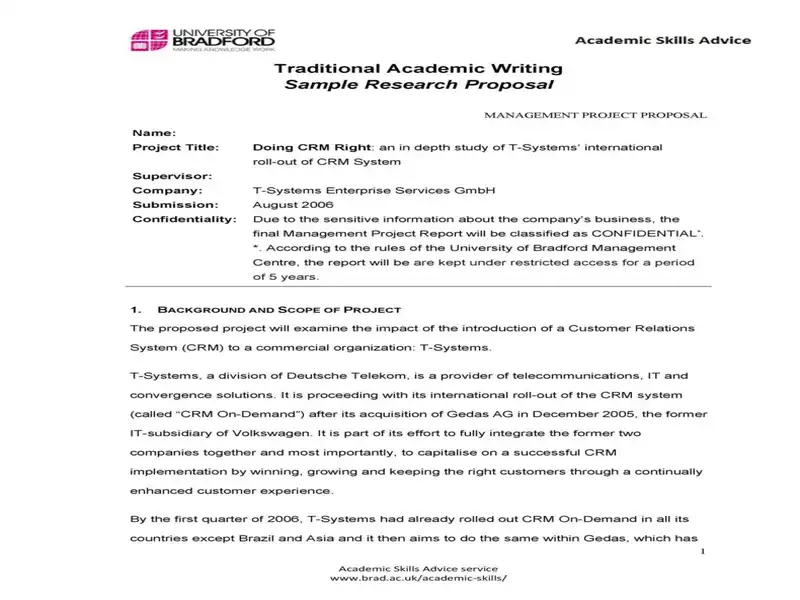
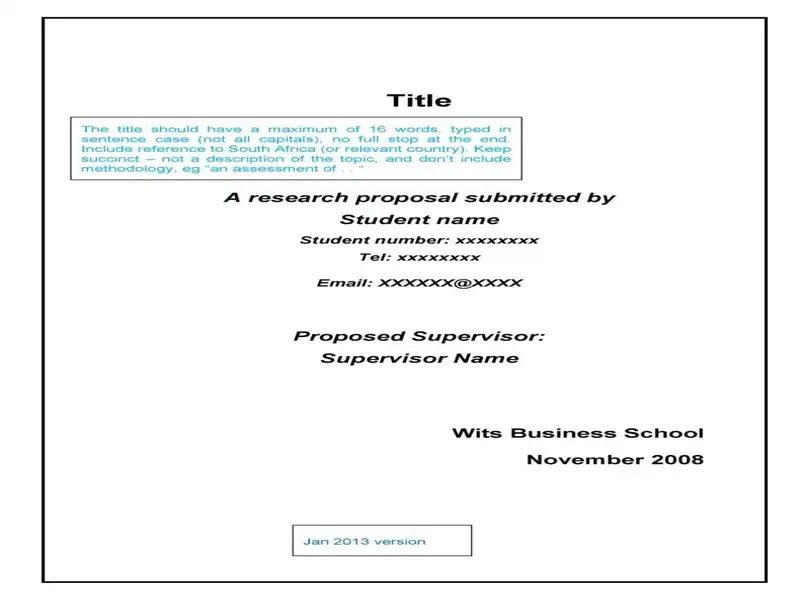
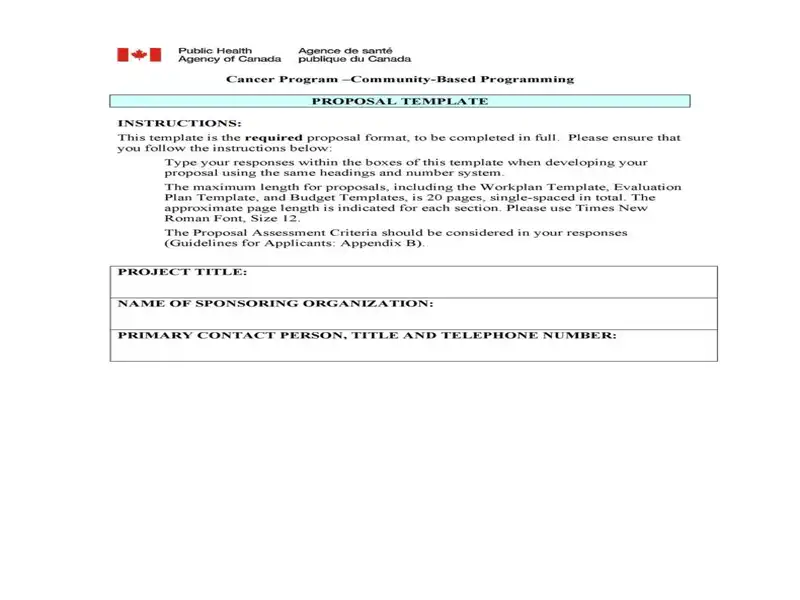
Customizing the Research Proposal Template
Customizing your research proposal template in Word is an important process that allows you to personalize and adapt the structure best to suit your research objectives and specific project requirements. Here’s how you can go about it:
- Understand the Basic Structure:Before you begin customization, familiarize yourself with the basic structure of a research proposal. Most proposals include a title, abstract, introduction, literature review, methods, projected results, and research timeline.
- Reflect on Your Research Objectives:Ensure your template aligns with your objectives. For example, if your project heavily emphasizes fieldwork, you might need to adapt the ‘methods’ section to reflect this.
- Add or Remove Sections:Don’t feel obligated to stick rigidly to the template. Feel free to add or remove sections according to your research project’s needs. For example, some proposals might benefit from a dedicated section on ethical considerations.
- Tailor the Formatting:Adapt the formatting to fit your personal preference or institutional guidelines. It might include changing the font type and size, adjusting the margins, or adding headers and footers.
- Include Visuals:If applicable to your research, consider including charts, graphs, or other visual aids. It could be particularly beneficial in the ‘projected results’ or ‘methods’ section.
- Revise and Edit:Always thoroughly review and edit your proposal. It includes checking for grammar and spelling errors, ensuring citations are correctly formatted and the text is clear and concise.
Customizing your research proposal template in Word creates a proposal that accurately and effectively communicates your research plan. Tailoring the template to your needs will ensure your proposal is engaging and informative.
Common Issues with Research Proposal Template Word
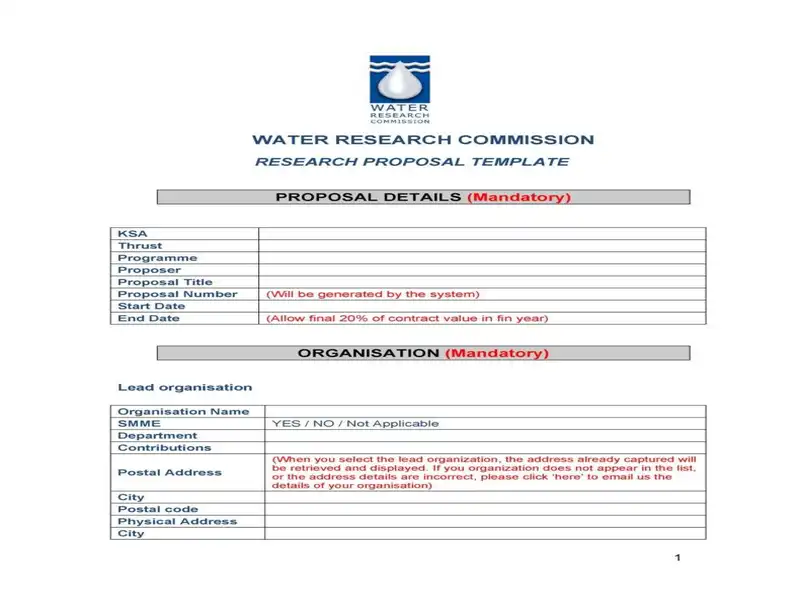
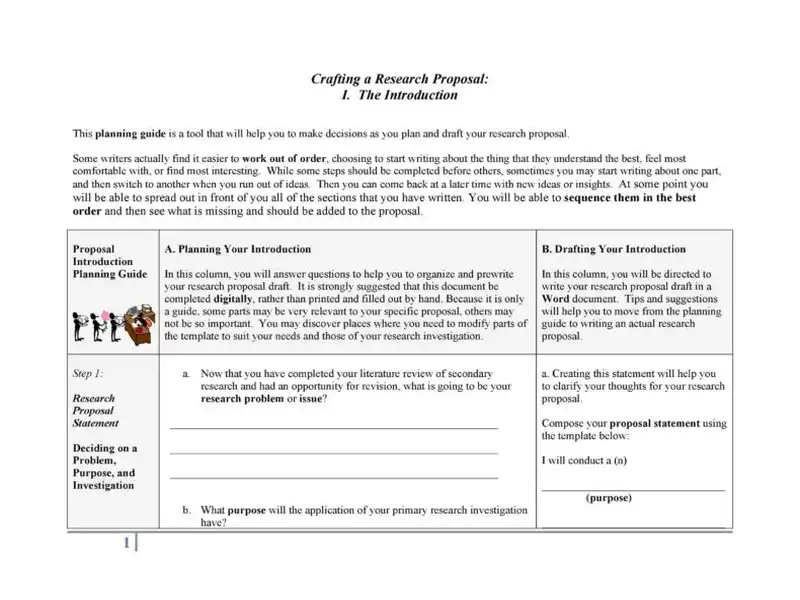
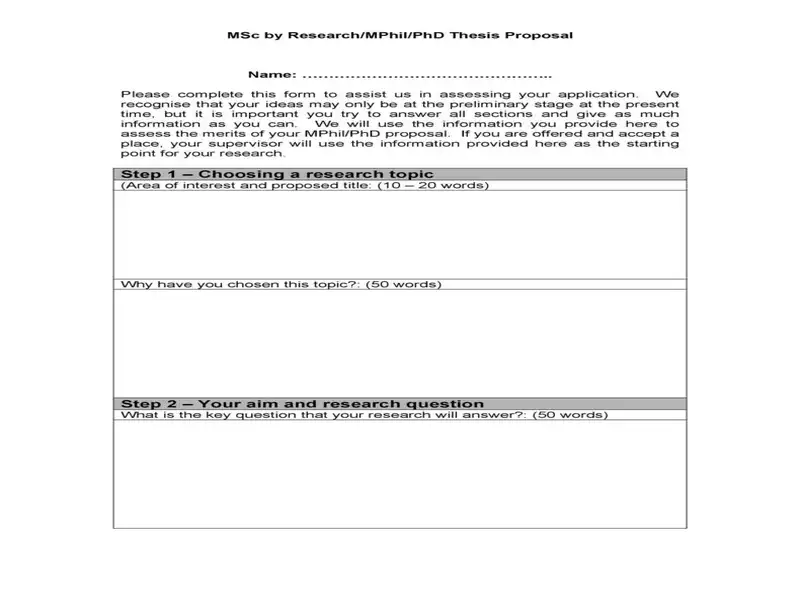
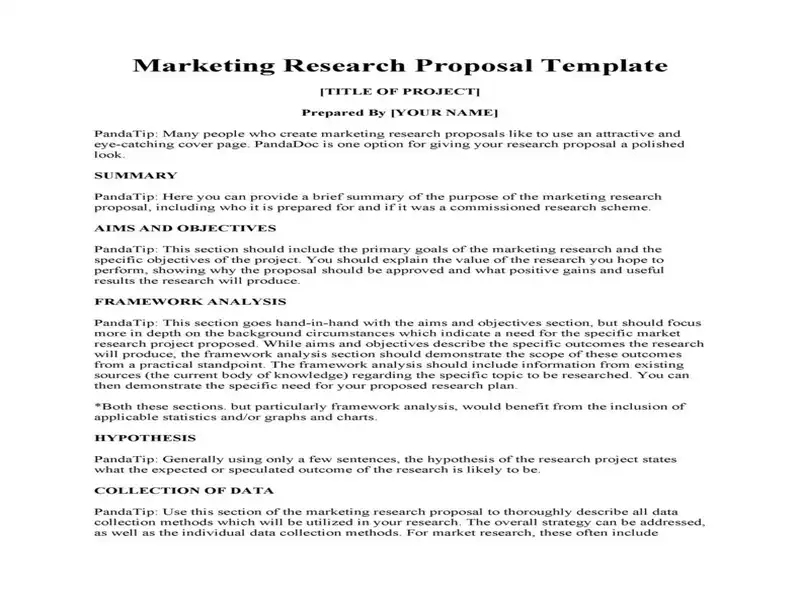
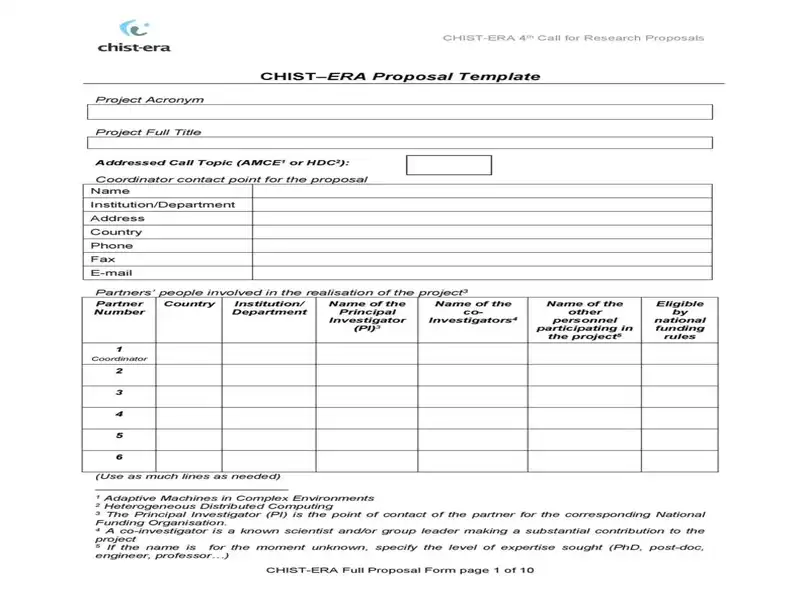
Working with a research proposal template in Word can be an easy way to format your proposal. However, users can sometimes encounter issues. Here’s how to troubleshoot some common problems:
- Issues with Formatting: Word templates come with preset formatting. However, if you’re experiencing inconsistent formatting or unwanted changes, check the Style Pane and modify it as required. Also, ensure that the ‘Paste Options’ are set to keep source formatting when pasting from external documents.
- Trouble Inserting Tables and Figures: If you need help inserting tables or figures, go to the ‘Insert’ tab and select ‘Table’ or ‘Picture.’ If the table or picture isn’t fitting correctly, adjust its size manually or use the ‘AutoFit’ feature for tables.
- Problems with Pagination: If page numbers need to appear or be corrected, head to the ‘Insert’ tab, select ‘Page Number,’ and choose your preferred style and location.
- Difficulty with Headers and Footers: Double-click at the top or bottom of a page to activate the header/footer area for issues with headers and footers. You can then modify them as needed.
- Struggling with Referencing: Referencing can be tedious, but Word has a built-in tool to assist you. Under the ‘References’ tab, use the ‘Citations & Bibliography’ section to manage your sources and format your citations and reference list.
- Trouble Saving Document: If you need to help saving your document, check that you have sufficient storage space on your device or cloud storage. Also, ensure you have the necessary write permissions for the saving location.
- Compatibility Issues: To ensure compatibility, if your document doesn’t open or display correctly on other devices, save the file in a different format (e.g., .doc instead of .docx or as a PDF).
Remember, while a template can significantly ease crafting your research proposal, it’s essential to know how to navigate and troubleshoot any issues that may arise for a smoother writing experience.
Case Study: Effective Use of a Research Proposal Template
Company X’s Success Story
To illustrate the significance of an efficient research proposal, let’s examine the case of a hypothetical corporation, Company X.
Company X, a reputable firm in the technology industry, had an innovative idea for a product that could revolutionize its sector. The idea was novel yet complex and required substantial research and development to transform it into a marketable product.
The project team needed a compelling research proposal to gain approval and secure funding from the company’s board and potential investors. With a research proposal template in Word, they began crafting a comprehensive and persuasive document.
Implementing the Research Proposal Template
The template provided a structured framework for the team, helping them to organize their thoughts and strategically present their idea. Following the provided headings and prompts, they efficiently outlined their objectives, methodology, potential challenges, and the project’s timeline.
The template ensured they noticed all critical components. The literature review section, for instance, pushed them to delve deeper into existing studies and theories related to their product idea, solidifying their understanding and ensuring their proposed research was consistent with existing knowledge.
Achieving Clarity and Precision
The template’s structure also enabled the team to present their information clearly and logically, making the proposal easier for readers to follow. It was particularly useful in the methodology section, where they needed to explain complex techniques and processes.
The Outcome
As a result, the team’s research proposal was well-received. It was praised for its clarity, detail, and the innovative nature of the proposed research. Following the template’s guidance, they thoroughly understood the research requirements and provided convincing arguments for the project’s potential success and impact on the industry.
The board approved the proposal, and the team secured the necessary funding to initiate their research. Thanks to the guidance of the research proposal template in Word, their innovative idea was set on the path from concept to reality.
This case study underscores the value of a well-structured research proposal and the benefits of using a template to guide the process. Whether you’re in academia or industry, a well-crafted research proposal can pave the way for project approval and successful research outcomes.
How to Make Your Research Proposal Stand Out
Knowing how to achieve these aspects in practice can be challenging, especially for novice researchers.
Whether you are using it for proposing a thesis or dissertation or submitting a research project for a class assignment, there are specific techniques you can use to enhance your research proposal and make it stand out.
Here are ten effective tips that can guide you in preparing.
- Have a Clear, Concise, and Engaging Title: The title of your proposal is the first thing reviewers will see. It should be concise, clear, and descriptive, effectively summarizing the focus of your submitted analysis. An engaging title can pique the interest of the reader.
- Well-Defined Objectives: The objectives of your research proposal should be clearly stated. It should be evident what you desire to accomplish with your study. Be precise in describing the objectives, as vague objectives may confuse the reviewer.
- Solid Literature Review: this shows you thoroughly comprehend the research topic and existing work. Highlight how your research will manage gaps or contribute to the current literature.
- Methodological Clarity: Be explicit and clear about your research proposal methodology. Explain justifications for your strategies and how they will support you in achieving the research objectives. The clear methodological presentation shows you have a well-thought-out strategy for your study.
- Implications and Significance: Explain the importance of your study. Describe how your research contributes to your domain of study, its functional importance, and how it may influence policy or practice.
- Neat and Professional Presentation: The appearance of your proposal matters. Use a consistent, readable font and layout. Proofread your proposal for spelling, punctuation, or grammatical errors. A clean, error-free proposal reflects attention to detail and professionalism.
- Use Visual Aids: Where appropriate, use diagrams, charts, or other visual aids to illustrate complex concepts or methods. These can make your proposal more engaging and easier to understand.
- Ensure Coherence: Ensure your proposal flows logically from one section to another. Each part should connect cohesively, contributing to an overall narrative that makes sense.
- Emphasize Your Capabilities: Clearly articulate why you are the right person to complete this research. Emphasize your skills, experiences, and resources to help you finish the research.
- Adhere to Guidelines: Last but not least, strictly follow any research proposal guidelines. It includes adhering to the required structure, word limit, and deadline. Overlooking these details can lead to a negative impression.
You can enhance the grade and effect of your research proposal, thereby increasing its chances of approval.
Conclusion
Developing a research proposal can be demanding, yet it’s an essential stepping-stone in the academic and scientific world. It forms the backbone of your research journey, providing a roadmap that guides your inquiries and analyses.
A structured research proposal, particularly one drafted using a research proposal template in Word, can streamline this process, ensuring that all crucial aspects of your research plan are articulated clearly and convincingly.
However, while templates can be an effective tool, remember that every research proposal is unique, reflecting the individual research question formulation and methodology.
Therefore, it is necessary to adapt the template to fit the needs of your research while still adhering to the fundamental structure. Moreover, awareness of the potential limitations of using a template, such as over-dependence and possible lack of customization, will help you make the most of this tool.
The most effective research proposals communicate a clear, original, and worthwhile research plan, demonstrating your understanding of your field and ability to contribute valuable new insights. Remember, your research proposal is your chance to convince your audience of the value of your research – so make it count!

The content creator team at calipsotree.com is dedicated to making topics accessible to everyone, with over 9 years of experience in writing and breaking down complex concepts into easy-to-understand articles that answer readers’ financial questions.








